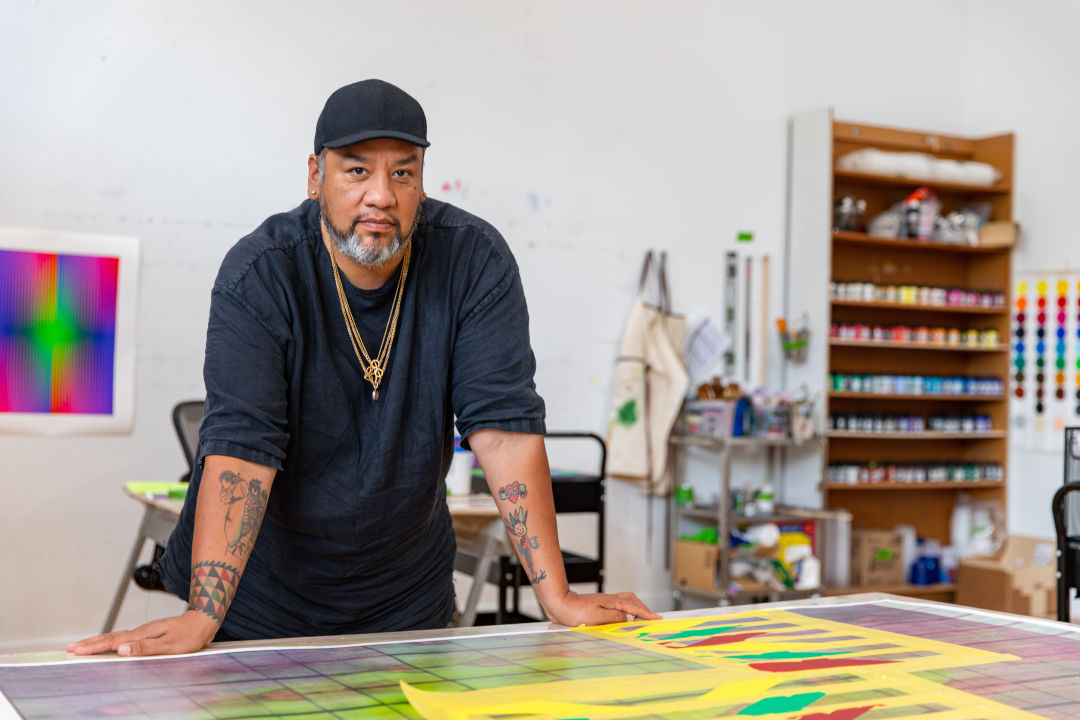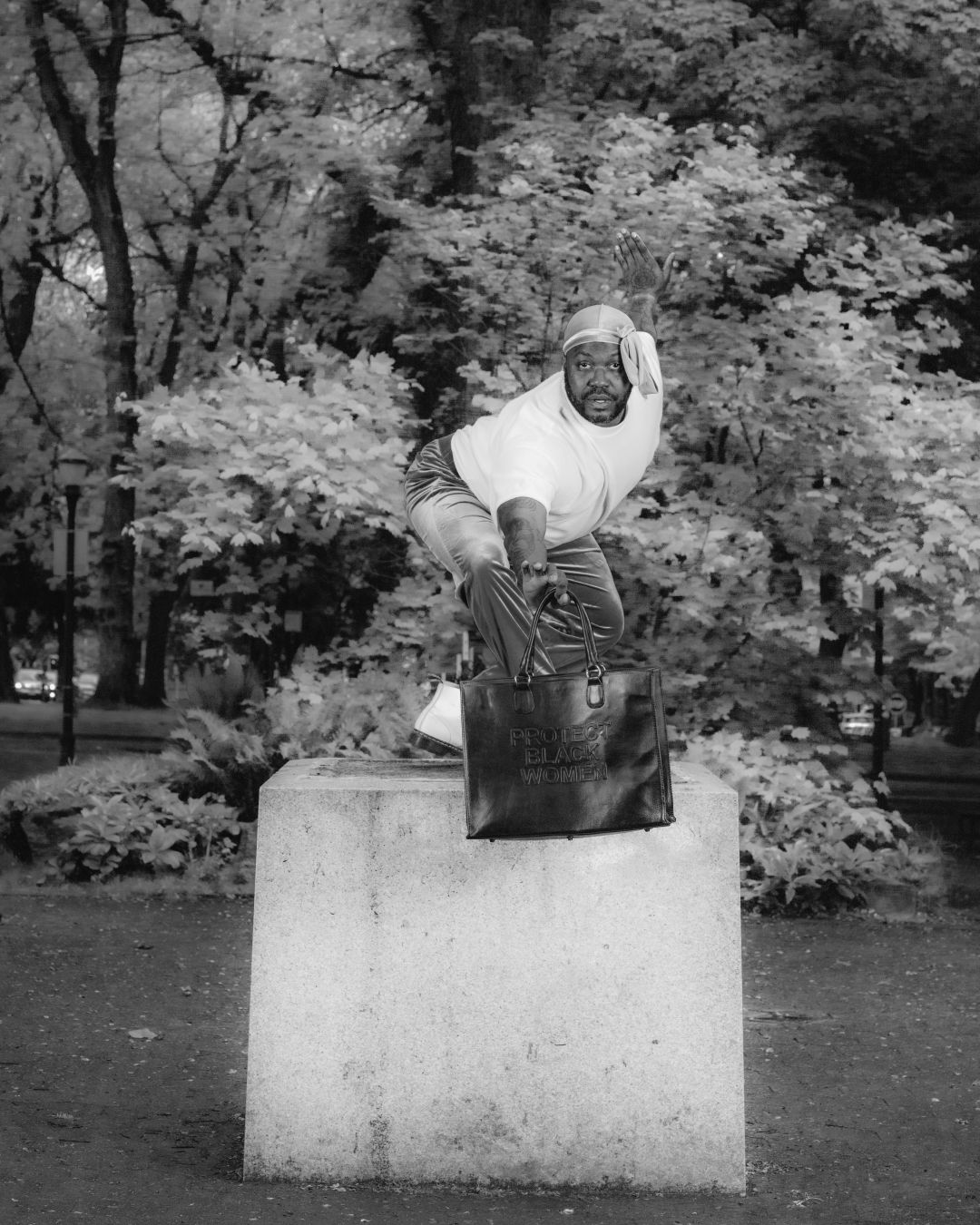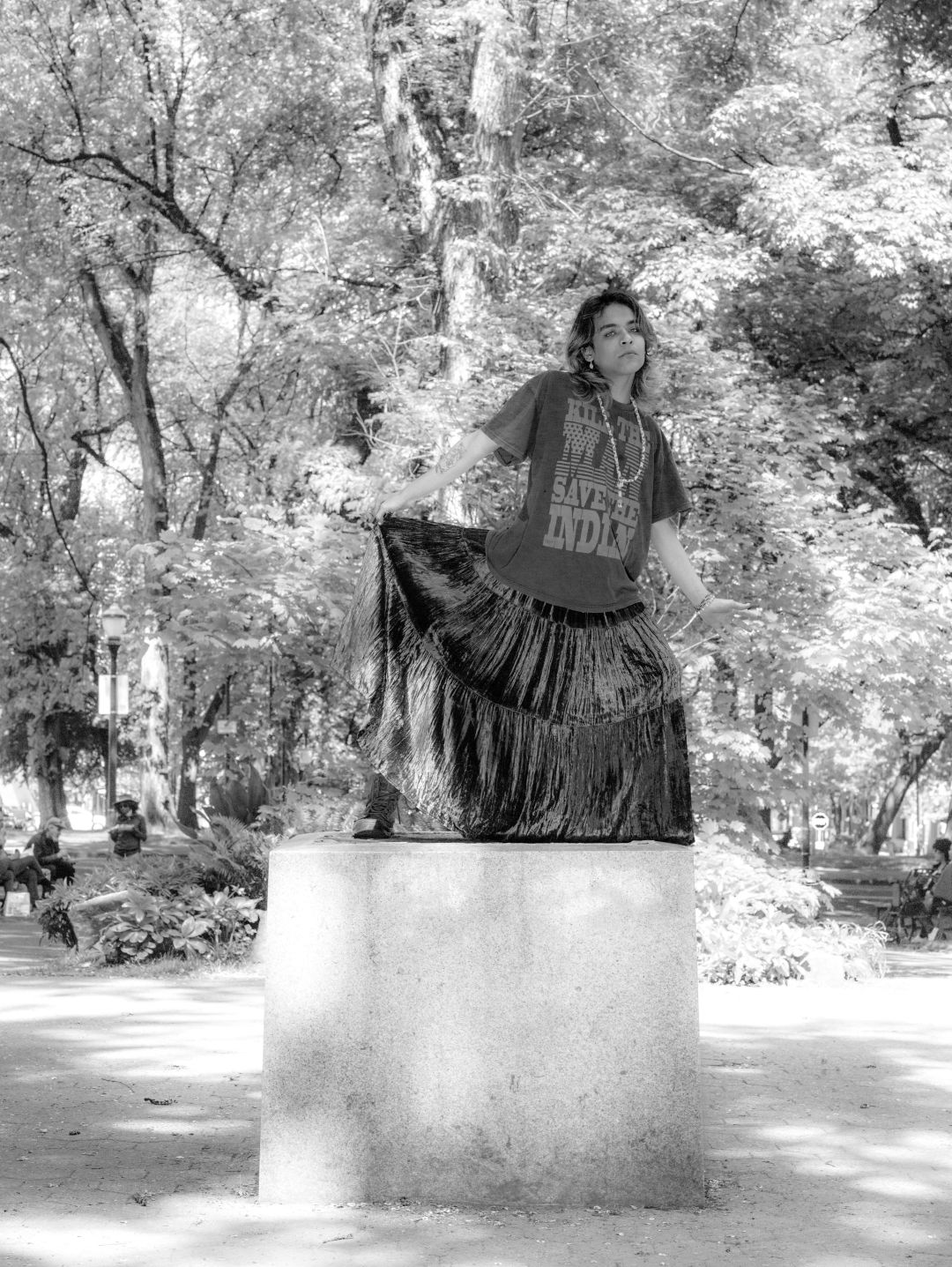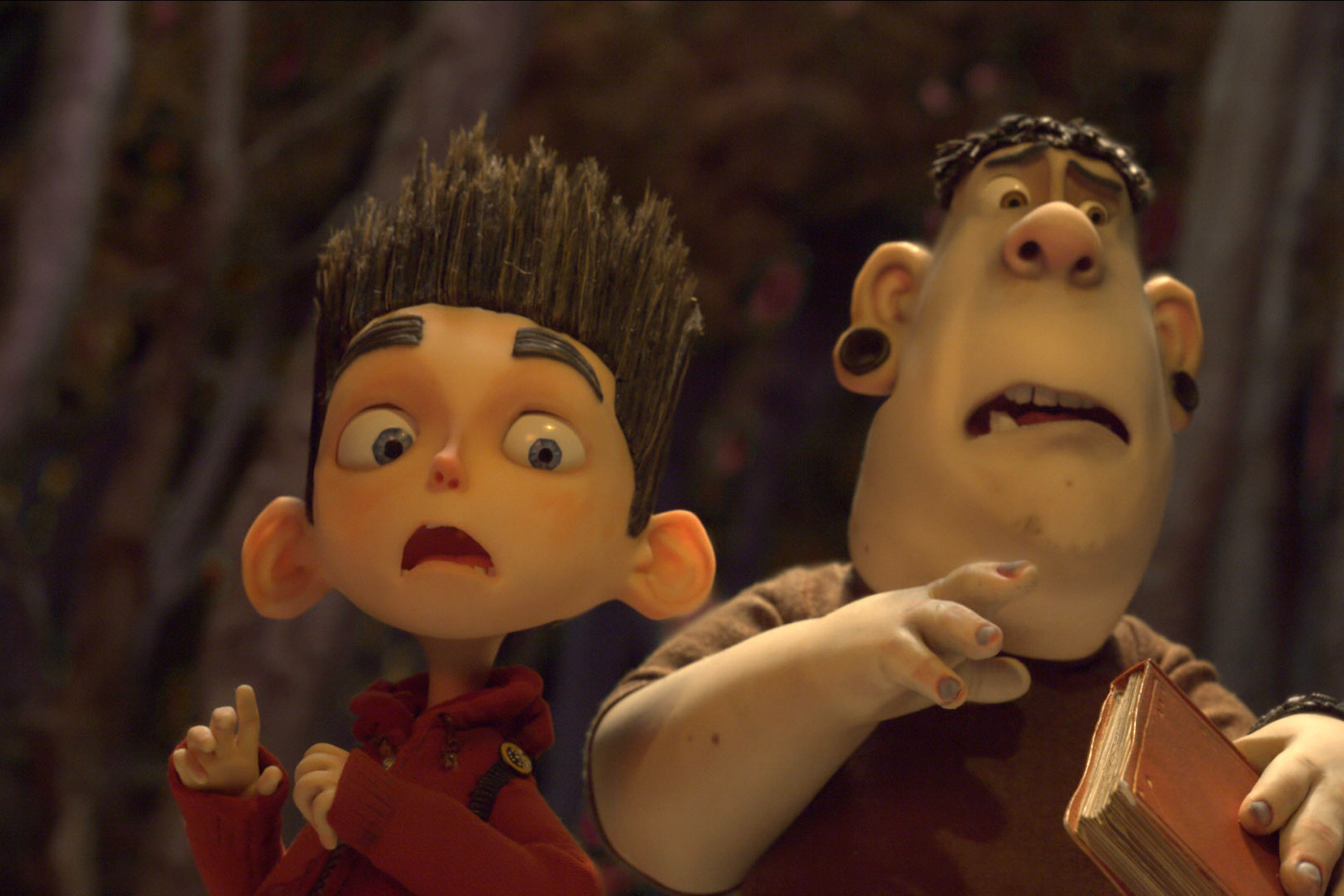Preview: Jeffrey Gibson’s ‘They Come From Fire’ at Portland Art Museum

Artist Jeffrey Gibson
Image: Brian Barlow
For three days last May, more than 100 people—most of them Indigenous—posed for portraits on and around empty Park Blocks pedestals where statues of Abraham Lincoln and Teddy Roosevelt stood before being toppled during 2020 protests.
“This was the largest Indigenous community that’s ever shown up for a project [of mine],” says Jeffrey Gibson, the artist behind the photo shoot. “We had somebody in a wheelchair who was determined to get up on the large [pedestal], and we got them up there. One image I think had nearly 30 people. Some are on the ground, but they packed the top of that pedestal and held onto each other.”
The images will appear in Gibson’s upcoming Portland Art Museum exhibition, They Come From Fire, opening October 15 and running through February. The show is a multipart installation that will take up the main building’s windows and its two-story Schnitzer Sculpture Court, comprising photos, glass panels meant to evoke protest posters, and a timeline of notable dates in Oregon’s Indigenous history. Gibson, a member of the Mississippi Band of Choctaw Indians and half Cherokee, is a serious get for PAM. Awarded a MacArthur “Genius” grant in 2019 for his melding of traditional Native American and western art, he also draws on queer history and camp. In recent years, his work has ranged from video projects celebrating the jingle dress dance to a monumental three-tiered ziggurat emblazoned with psychedelic patterns.

Image: Courtesy Portland Art Museum
The ask came from Kathleen Ash-Milby, PAM’s curator of Native American art, who reached out when she began work on an exhibit devoted to Oscar Howe, a midcentury Yanktonai Dakota artist known for his bright color and geometric abstraction. She envisioned a site-specific installation by a contemporary artist that could run concurrently, and her mind went immediately to Gibson. After an early grant came through, he traveled from his home in New York’s Hudson Valley to Portland for a site visit.
“At that point it was pretty speculative,” says Ash-Milby, who’s known Gibson since 2002. “I wanted to give him options. I walked him through all the spaces, and he basically was like ‘Yes, yes, yes, yes.’”
Among those photographed for They Come From Fire was 79-year-old Bill Ray, a member of the Klamath Tribes and a longtime PAM supporter. For his photo, Ray brought items honoring his siblings: a leather cape with a woven collar he’d had made for his late sister in 1973, a beaded ball cap she’d bought for him at a powwow, and an eagle feather fan that had belonged to his brother, who died shortly after the shoot. “It was in tribute to them that I was even standing there,” Ray says.
He and his fellow photo subjects will fill a wall with their black-and-white likenesses in the sculpture court. Suspended from the ceiling will be 12 glass panels created in collaboration with Portland’s Bullseye Glass, bearing phrases (“Our Bodies Our Choice,” “They Speak to Their Ancestors”) in Gibson’s own handwriting. The goal is to shoot light through the glass in order to bathe the portraits—and museum-goers—in vivid color.

Image: Courtesy Portland Art Museum
As for the pedestals, Ray thinks less about their former inhabitants than about their continued use. “They’re still serving a purpose,” he says. “It’s just different people being recognized for whatever their contributions have been, or will continue to be.”




